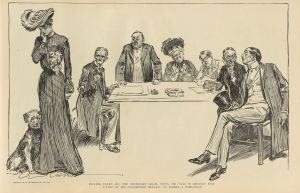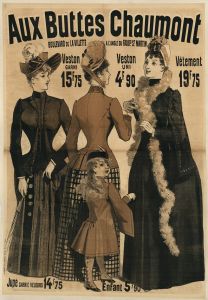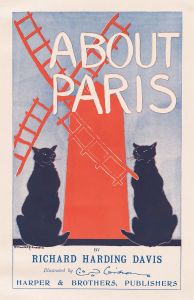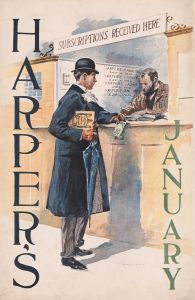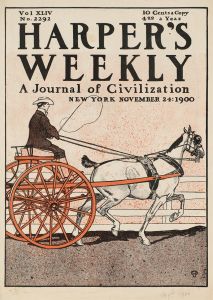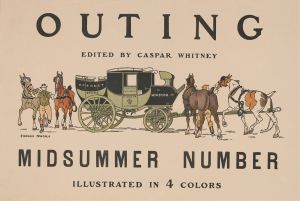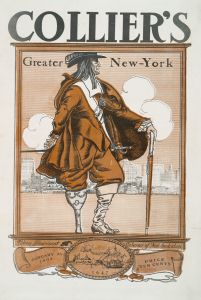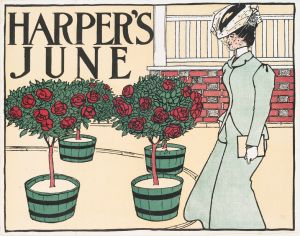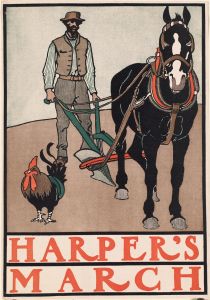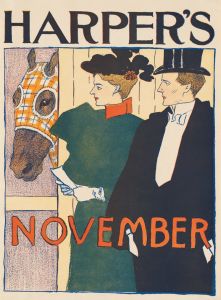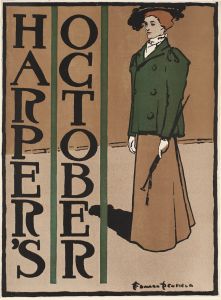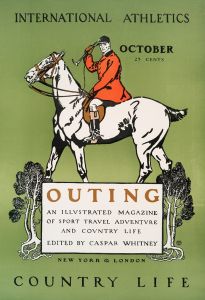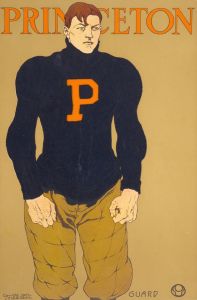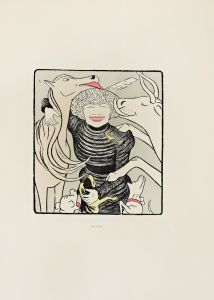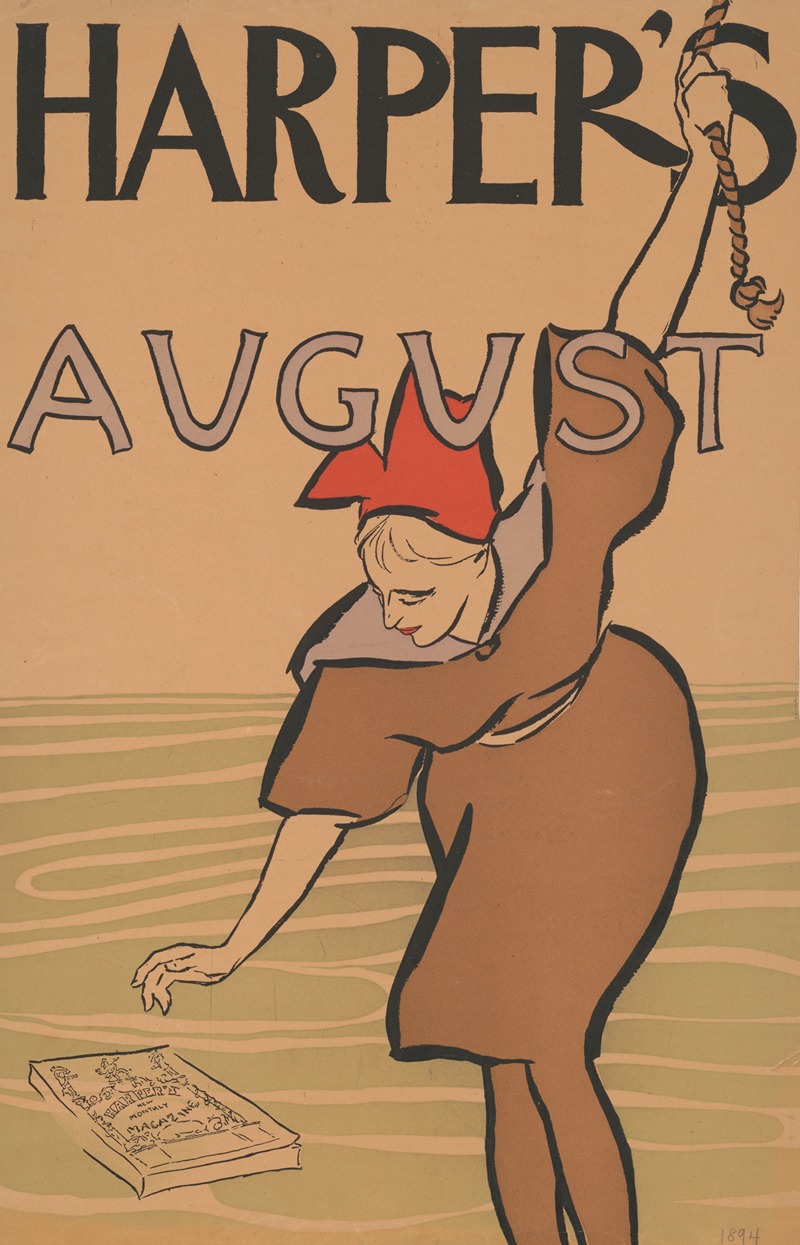
Harper’s [for] August
A hand-painted replica of Edward Penfield’s masterpiece Harper’s [for] August, meticulously crafted by professional artists to capture the true essence of the original. Each piece is created with museum-quality canvas and rare mineral pigments, carefully painted by experienced artists with delicate brushstrokes and rich, layered colors to perfectly recreate the texture of the original artwork. Unlike machine-printed reproductions, this hand-painted version brings the painting to life, infused with the artist’s emotions and skill in every stroke. Whether for personal collection or home decoration, it instantly elevates the artistic atmosphere of any space.
Edward Penfield was a prominent American illustrator and graphic designer, known for his significant contributions to the field of poster art during the late 19th and early 20th centuries. One of his notable works is "Harper’s [for] August," a poster created in 1896 as part of a series of monthly promotional posters for Harper's Magazine. This piece is a quintessential example of Penfield's style and the broader Art Nouveau movement, which was characterized by its decorative, flowing lines and emphasis on natural forms.
"Harper’s [for] August" features a woman in a summer dress, holding a parasol, and reading a copy of Harper's Magazine. The image captures the leisurely and cultured lifestyle associated with the magazine's readership at the time. Penfield's use of bold outlines and flat areas of color was innovative and influential, helping to establish the visual language of modern advertising. His work was instrumental in elevating the status of the poster from mere advertisement to an art form in its own right.
Penfield's posters for Harper's Magazine are particularly significant because they represent one of the earliest examples of a magazine using posters as a regular promotional tool. Each month, Penfield created a new design that reflected the season or theme of the magazine's content, thereby creating a cohesive and recognizable brand identity. This approach not only helped to increase the magazine's circulation but also set a precedent for future advertising campaigns.
The Art Nouveau style, which Penfield embraced, was part of a broader movement that sought to break away from the historical imitations of the 19th century and create a new aesthetic that was both modern and accessible. This movement was characterized by its emphasis on organic forms, intricate patterns, and harmonious compositions. Penfield's work, including "Harper’s [for] August," exemplifies these principles through its elegant design and attention to detail.
Edward Penfield's contribution to graphic design and illustration extends beyond his work for Harper's. He was a key figure in the development of American poster art and played a crucial role in the popularization of the medium. His posters are celebrated for their artistic merit and their ability to communicate effectively with the public. Today, Penfield's work is held in high regard by collectors and historians alike, and his posters are considered valuable examples of early American graphic design.
In summary, "Harper’s [for] August" by Edward Penfield is a significant work in the history of graphic design, reflecting both the artistic trends of its time and the evolving role of advertising in society. Penfield's innovative approach to poster design not only helped to define the visual identity of Harper's Magazine but also contributed to the broader acceptance of posters as a legitimate form of artistic expression.





